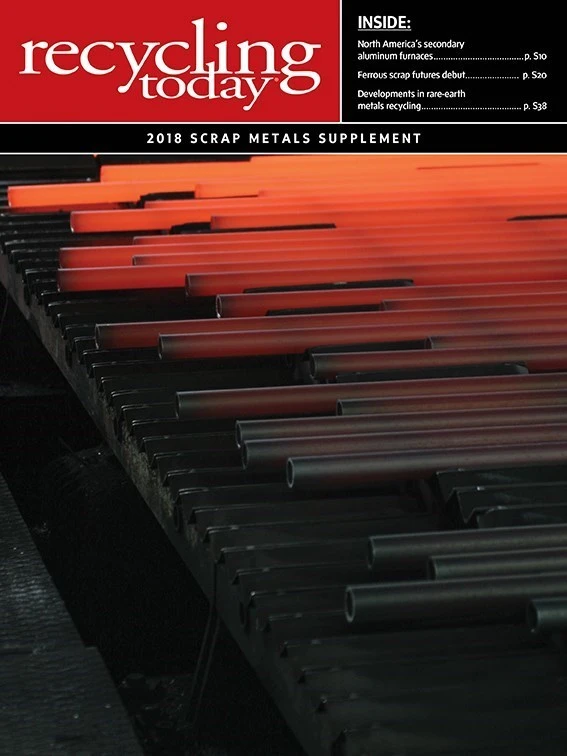
The Chinese government’s series of inspections and planned restrictions pertaining to imported scrap materials has provided another reason to wonder whether the volume of cross-border scrap metals trading may recede rather than grow in the years to come.
Nonferrous recyclers
China’s government has adopted this “anti-scrap” position while it is still in the midst of needing imported metallic units of some type, whether ores, concentrates, ingots, cathodes or scrap. That has caused some North American recyclers to consider investing to upgrade material with the thought that, in a pure enough form, it still can find a home in China.
Investing to upgrade scrap quality is an ongoing process for established recycling companies, but the proposed restrictions to America’s largest export market likely will provide an impetus to make these investments sooner rather than later.
What often has been referred to during China’s boom years as “the rest of Asia” also is receiving increased attention. In the ferrous scrap sector, 2017 saw Bangladesh, Pakistan
"China has for two decades absorbed considerable amounts of red metal and aluminum scrap, but proposed restrictions—if carried out—will affect several heavily traded grades.”
Nonferrous traders and processors may soon find themselves sending containers to the same places if prohibited nonferrous grades follow a pattern that is being seen in the plastic scrap sector. While China is phasing in prohibitions on lower-grade nonferrous scrap, its restrictions on some types of plastic scrap in 2017 were essentially immediate.
Figures offered by a presenter at the November 2017 Paper & Plastics Recycling Conference Europe offer insight into a rapid shift in processing capacity and shipping destinations in the plastic scrap sector. According to the freight forwarder’s presentation, in 2016, Europe sent 89 percent of its outbound plastic scrap to Chinese ports. In September 2017, just 46 percent went to Chinese ports, with Malaysia receiving 12.6 percent, Hong Kong receiving 10.7 percent and Vietnam 9.5 percent.
Some nonferrous scrap processors and consumers based in China are conducting due diligence in neighboring nations to follow a similar strategy. They are confident the metal units still will be needed, though providing them may entail some processing and
Scrap processors and traders in North America or anywhere else in the world have shown a steadfast ability to adjust to circumstances, take risks and find the next opportunity. It seems likely the remainder of this decade will provide plenty of opportunities to demonstrate those positive traits.

Explore the January 2018 Scrap Metals Supplement Issue
Check out more from this issue and find your next story to read.
Latest from Recycling Today
- Athens Services terminates contract with San Marino, California
- Partners develop specialty response vehicles for LIB fires
- Sonoco cites OCC shortage for price hike in Europe
- British Steel mill’s future up in the air
- Tomra applies GAINnext AI technology to upgrade wrought aluminum scrap
- Redwood Materials partners with Isuzu Commercial Truck
- The push for more supply
- ReMA PSI Chapter adds 7 members






